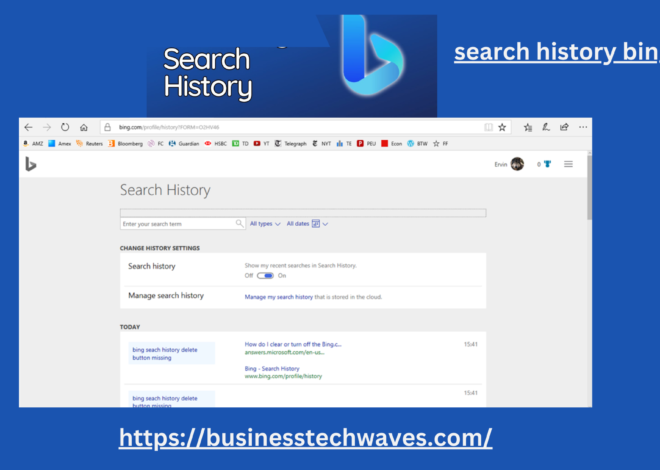
Gmail Mail Attachment Size Limit: Best Understanding Its Restrictions and Workarounds 2024
Gmail mail attachment size limit in today’s digital age, email is an essential tool for communication, whether for professional, personal, or educational purposes. As one of the most popular email services globally, Gmail provides a wide range of features to streamline user experience, including the ability to send and receive attachments. However, Gmail users often encounter a restriction that can be frustrating—the attachment size limit. Understanding Gmail mail attachment size limit and exploring potential workarounds is essential for efficient email management. In this article, we’ll break down Gmail’s size restrictions, their implications, and offer various methods to bypass these limits.
Understanding Gmail’s Attachment Size Limit
Gmail mail attachment size limit, like most email services, imposes a limit on the size of attachments that users can send and receive. As of now, Gmail mail attachment size limit is 25 MB per email. This means that when composing an email, the combined size of all attachments cannot exceed 25 MB. It’s important to note that this size limit includes the total size of the files after they’ve been encoded, not just the size of the original files themselves. Email encoding can increase file size by about 33%, so a file that is 20 MB on your computer may exceed the 25 MB limit once it’s encoded for email transmission.
Why the 25 MB Limit Exists
Gmail mail attachment size limit, Email systems have limitations for several reasons. First, attachments consume server resources, and allowing unrestricted file sizes would put a massive strain on Gmail mail attachment size limit infrastructure, potentially leading to slower service and higher operational costs. Additionally, large attachments can clog inboxes, leading to storage and bandwidth issues for both senders and receivers.
Gmail mail attachment size limit, The 25 MB limit is a balance between allowing users to share large files without overloading the system. However, for many users, especially those sending high-resolution images, videos, or other large documents, 25 MB may feel restrictive.

Receiving Attachments in Gmail: A 50 MB Limit
While Gmail mail attachment size limit outgoing attachments to 25 MB, it allows users to receive larger attachments—up to 50 MB. This is useful when someone outside the Gmail ecosystem sends a file. However, users need to remember that although they can receive larger files, Gmail doesn’t automatically increase the storage available for attachments. Gmail accounts start with 15 GB of free storage, which includes space shared between Gmail, Google Drive, and Google Photos. As such, regularly receiving large attachments can quickly fill up a Gmail user’s storage quota, necessitating upgrades or file management to free up space.
What Happens When Your Attachments Exceed 25 MB
If you attempt to attach files that exceed the 25 MB limit in a Gmail email, Gmail will automatically prompt you to upload the files to Google Drive, its cloud storage service. Instead of attaching the file directly to the email, Gmail provides a link to the file stored on Google Drive. This process is seamless for both the sender and the recipient, as Gmail automatically handles the upload and generates the necessary link.
Here’s how Gmail behaves when your attachments exceed the limit:
- File Upload Prompt: If your attachments are larger than 25 MB, Gmail will notify you with a message asking if you want to upload the files to Google Drive.
- Google Drive Integration: Upon agreeing, Gmail will upload the file to your Drive account and automatically insert a link to the file within the email.
- Recipient Access: The recipient of the email will see a clickable link that opens the file in Google Drive. Depending on the sharing settings of your Google Drive, the recipient might need permission to access the file, which Gmail can handle by prompting you to grant access.
Workarounds for Gmail’s Attachment Size Limit
While Gmail mail attachment size limit integration with Google Drive simplifies the process of sharing large files, there are additional workarounds for users who might not want to rely solely on Google Drive. Here are a few strategies to bypass Gmail’s 25 MB attachment limit:
1. Use Google Drive
The most straightforward solution to sending files larger than 25 MB is to take advantage of Google Drive. With 15 GB of free storage provided with each Gmail account, you can easily upload large files and send them via a shareable link.
- How to Use Google Drive: After composing an email, click on the “Google Drive” icon at the bottom of the email composition window. Select the file you wish to attach, and Gmail will insert a link to the file in your email. The recipient can access it, provided they have the necessary permissions.
- Managing Permissions: Gmail mail attachment size limit, Before sending the email, Gmail may ask you to adjust the sharing settings of the file. You can either allow anyone with the link to view or restrict access to specific people.
Google Drive is particularly useful because it supports a variety of file formats and sizes, with a limit of 5 TB for individual files uploaded to the platform. However, if you consistently need more than the 15 GB of free storage, you may need to subscribe to Google One, which offers expanded storage options.
2. Use Compression Tools
Another method to bypass Gmail’s 25 MB attachment limit is to compress files using file compression software, such as WinRAR, 7-Zip, or WinZip. Compressing files reduces their size, often allowing you to attach them directly to an email.
- How Compression Works: Compression software reduces the size of files by eliminating redundant data or packaging multiple files into a smaller archive format, such as .zip or .rar.
- Steps: After installing the compression software, select the files you want to compress, right-click, and choose “Compress” or “Add to Archive.” Once the file has been compressed, check its size to ensure it’s within Gmail’s 25 MB limit, then attach it to your email.
Keep in mind that the effectiveness of compression varies depending on the type of file. Text documents and spreadsheets often compress well, while images, videos, and other media files may not see a significant reduction in size.
3. Use Third-Party File Sharing Services
Gmail mail attachment size limit, If you prefer not to use Google Drive, there are other third-party file-sharing services that allow you to share large files by generating a download link, which can be easily pasted into your Gmail email. Some popular file-sharing services include:
- WeTransfer: WeTransfer allows users to send files up to 2 GB for free. No account is necessary for basic transfers.
- Dropbox: Dropbox offers 2 GB of free storage and integrates seamlessly with Gmail via its Chrome extension. With Dropbox, you can share files of any size by generating a link.
- OneDrive: Microsoft’s OneDrive is another excellent alternative for file sharing. It provides 5 GB of free storage and integrates with other Microsoft products.
- Filemail: Filemail allows users to send files up to 5 GB for free without registration.
These services allow you to bypass Gmail’s attachment size limit by simply uploading your file to the service and sending the recipient a link to download the file.
4. Split Your Files
Gmail mail attachment size limit, If you’re sending a large file that cannot be compressed sufficiently or uploaded to a third-party service, splitting the file into smaller parts is another viable option. File-splitting tools, such as HJSplit, can break down large files into smaller segments that fit within Gmail’s attachment size limit. Each segment can be sent in a separate email, and the recipient can reassemble them using the same software.
Considerations When Sending Large Attachments
While Gmail mail attachment size limit provides several methods for sending large attachments, there are some important considerations to keep in mind:
- Security and Privacy: Gmail mail attachment size limit When using Google Drive or third-party services, ensure that you set appropriate access permissions for the recipient. Sharing sensitive information should always be done with caution, ensuring that files are password-protected or that the recipient is verified.
- Bandwidth and Internet Speed: Sending large files via email or cloud services can be time-consuming, depending on your internet connection. If you’re working with limited bandwidth, you might experience slow upload speeds when dealing with large attachments.
- File Types: Gmail has restrictions on certain file types that can be sent as attachments. For example, .exe files, which are commonly used for software installations, are blocked due to security concerns. If you need to send a blocked file type, you’ll need to compress it or change its file extension.
Conclusion
Gmail mail attachment size limit 25 MB attachment size limit may seem restrictive at first, but with modern cloud storage solutions, compression tools, and third-party file-sharing services, sending large files is easier than ever. Google Drive offers the most seamless experience for Gmail users, but alternatives such as Dropbox, WeTransfer, and file compression tools provide flexibility for different file-sharing needs. By understanding these limits and employing appropriate workarounds, users can manage their email attachments efficiently without compromising on convenience or security.


